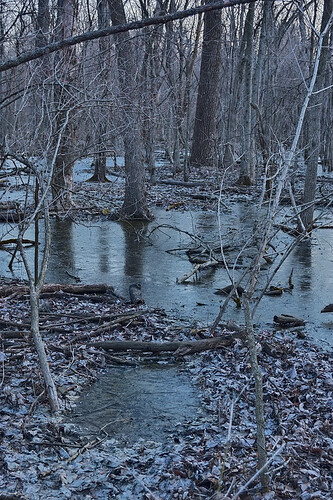
A frozen swamp, just before sunrise, at the Gravois Creek Conservation Area in south Saint Louis County. We had a warm period, common here in winter, with lots of rainfall; then came a hard freeze. The ground this morning was hard and frost-covered, making for an easy hike along normally muddy terrain.
Deciduous forests, such as this one, only cover at most a third of the United States, a small part of Canada, most of the colder parts of Europe, a small part of Asia, and is very rare elsewhere. I often have to remind myself that what is commonplace for me is exotic for many of my visitors here.
The word ‘deciduous’ derives from the Latin adjective deciduus, which according to the Lewis and Short dictionary means ‘falling down or off’. During autumn, deciduous trees loose their leaves, and the landscape becomes a dreary mostly undifferentiated brown color.

Gravois Creek at sunrise.
Like many river courses in the midwestern United States, this creek was named by the French. According to the Glossary of Mississippi Valley French 1673-1850, gravois means ‘gravel’ (although in modern French this translates to ‘plaster rubble’). Indeed the bottom of this stream, like most streams in the Ozarks, is covered in gravel made up mostly of hard, resilient chert, a form of microcrystaline quartz, stained a light reddish-brown or tan color.
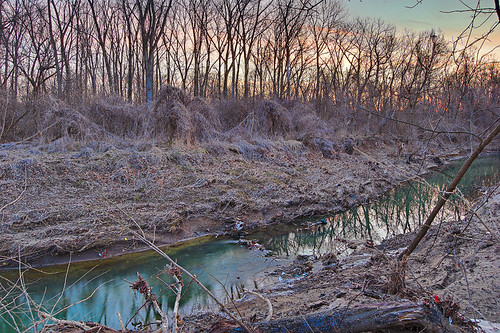
Frost formed on the ground during the night. This frost can sort-of be seen here on the dead grasses of last year's growth, on the opposite creek bank.
The creek itself has a green color due to algae growing in it. This stream has a good base flow, being fed by springs, and I've never seen it run dry.
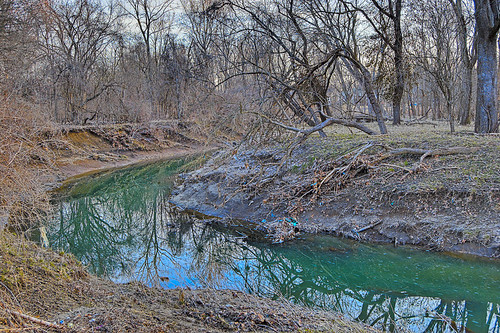
Soon after dawn, wild turkeys fly down from their roosts in the trees, and call each other so that they can flock together. Hearing turkeys when I took this photo — they were very loud — I moved closer to investigate.

Wild turkeys, near the location of the last photo. This is a very tight crop of a photo, and low quality. I need one of these

The sun has risen, the frigid air is warming, and the frost is melting.

This conservation area is only accessible via the Grant's Trail bicycle path.
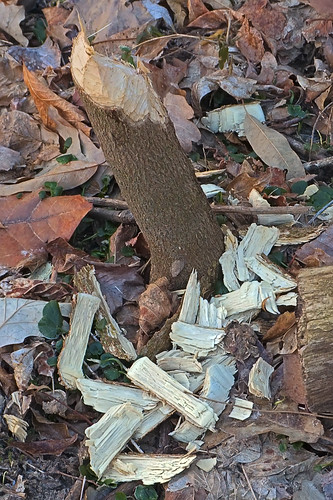
A small tree, perhaps felled by a beaver? They are common hereabouts, as is another aquatic mammal, the muskrat.

Whitetail deer tracks, preserved in the frozen mud. These animals are very common in this area, but they can be hard to see, since their coloring blends with the browns of tree bark, fallen leaves, and dirt.
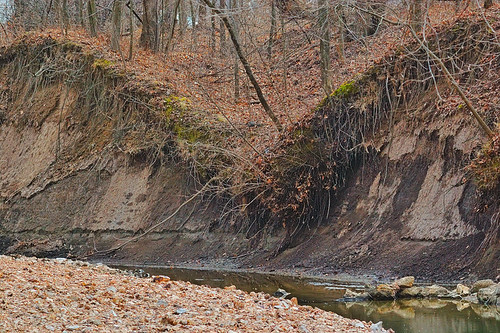
An eroded stream bank along Fishpot Creek, at Vance Trails Park, in Valley Park, Missouri. This photo was taken near the mouth of the stream, where it discharges into the Meramec River. Click here for a photo taken nearby.

This is the Engelmann Woods Natural Area, in northeastern Franklin County near Saint Albans, Missouri. Named after the German physician and botanist George Engelmann, who settled in Saint Louis, this area contains a rare old-growth forest.
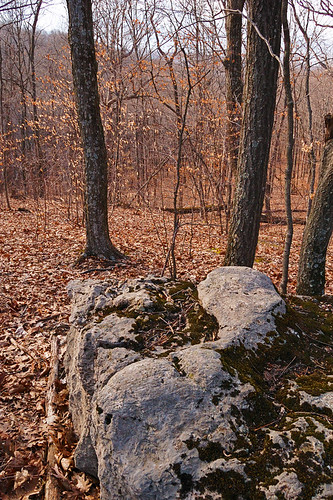
The advantage of winter nature walks is that normally unseen vistas, blocked by vegetation, become visible. And there are no nuisance insects or poisonous reptiles.

A very old cedar tree.
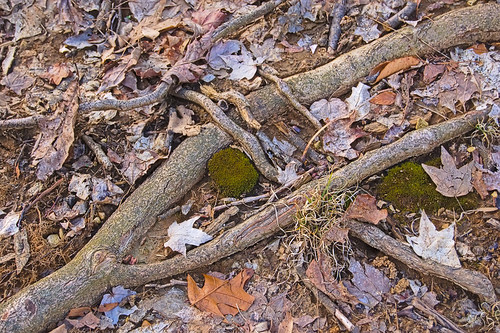
Tree roots and leaves, along with mosses that survive green throughout the winter.


Very cool.
ReplyDelete